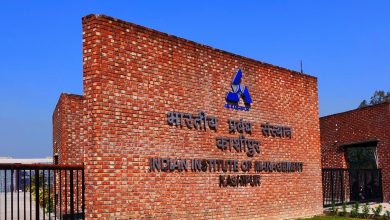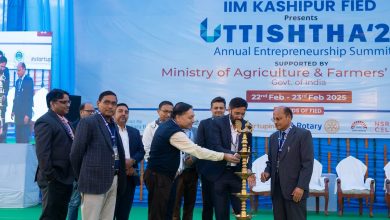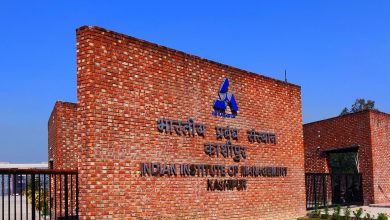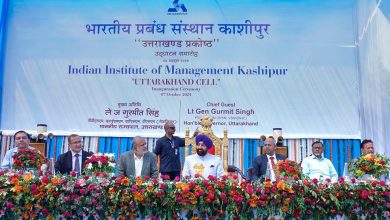AVINYA 2025 at IIM Kashipur: A Visionary Conclave on Design Thinking, AI, and Strategic Innovation
The event brought together distinguished leaders and experts to explore the intersection of design thinking, innovation, and strategic transformation across industries.
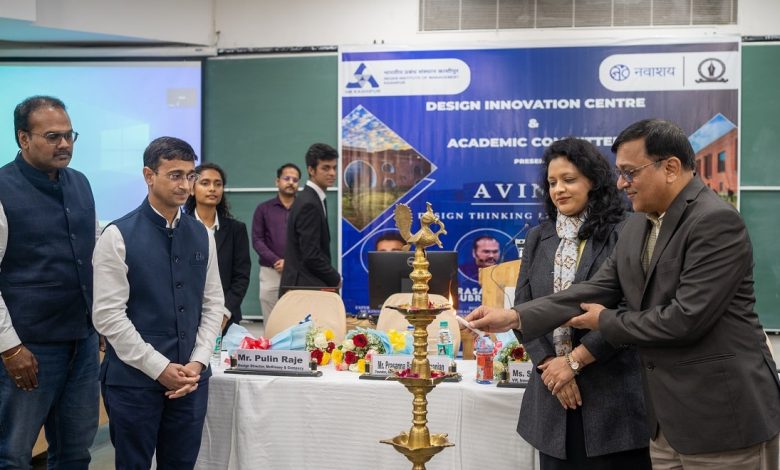
AVINYA 2025 at IIM Kashipur: The Indian Institute of Management Kashipur (IIM Kashipur) successfully hosted AVINYA – A Conclave on Design Thinking Led Innovation, jointly organized by Navaashay, the Design Innovation Centre, and the Academic Committee. The event brought together distinguished leaders and experts to explore the intersection of design thinking, innovation, and strategic transformation across industries.
As the lamp was lit, signifying the dawn of new ideas, the atmosphere brimmed with excitement. Prof. Kunal Ganguly, Dean – Development, set the stage with their welcome addresses, underscoring the significance of design thinking in modern business landscapes. The event also marked a pivotal moment with the signing of an MoU between IIM Kashipur and Akirah Analytics, symbolizing a commitment to fostering design-led innovation.
Mr. Pulin Raje, Expert Design Director at McKinsey & Company, opened with a thought-provoking question: “What if healthcare could be transformed through design?” He highlighted how design thinking drives real business impact, with companies seeing a +32% revenue increase and +56% return to shareholders.
To illustrate creative problem-solving, he engaged the audience in a simple exercise—drawing a vegetable, proving that multiple paths can lead to the same solution. He then shared a real-world case study on a neonatal resuscitation monitoring device, developed after field research in Indonesian hospitals, where mothers had limited access to advanced healthcare technology. His session underscored the power of human-centered design in driving innovation and saving lives.
Following him was Mr. Prasanna Balasubramanian, Founder of Akirah Analytics, who posed a bold challenge—”Are we ready to boil the ocean?” He emphasized that Design Thinking Innovation (DTI) isn’t about incremental change—it’s about radical transformation.
His session highlighted a thought-provoking idea: design thinking isn’t just a structured process—it’s embedded in our daily lives. Unlike conventional business strategies, it doesn’t rely on standardized SOPs, allowing room for flexibility, creativity, and adaptability. His words resonated with the audience, urging them to embrace the messiness of innovation and use design thinking as a mindset rather than a method.
As the discussion transitioned into the future of AI-driven innovation, Ms. Shuchi Aggarwal, VP – Innovation Strategy at Accenture, explored the evolution of AI—from Machine Learning to Generative AI—and its role in design-driven innovation.
She posed a compelling question: “What if design thinking could create something so powerful that everyone is forced to use it?” Highlighting Generative AI’s shift from prediction to strategy, she emphasized its ability to generate solutions, offer insights, and transform entire value chains.
Her core message: True innovation requires identifying the right use case, deeply understanding the problem, designing a solution, and iterating constantly. She urged businesses to merge creativity with AI for greater impact.
Carrying forward the spirit of innovation, Mr. Sanjay Daflapurkar brought the focus back to leadership and strategic planning, invoking the words of Ratan Tata’s 1995 address, which encouraged organizations to be bolder, more innovative, and more creative. He underscored the “ONE TATA” philosophy, which aims to scale aspirational innovation projects while ensuring that every stakeholder benefits.
His session also emphasized the direct link between innovation and strategic execution, touching upon the key principles of empathy, creative confidence, an iterative mindset, optimism, embracing ambiguity, and collaboration. His message was clear—innovation is not just about ideation; it requires ownership, bold decision-making, and a commitment to solving challenges together.
As the individual sessions concluded, the energy in the room shifted from listening to engaging, setting the stage for one of the most dynamic segments of the day—the Fishbowl Session. Moderated by Prof. Kumkum Bharti, Coordinator of Navaashay-DIC, this interactive discussion brought together experts and attendees, breaking the barriers between speakers and the audience.
The Fishbowl format allowed participants to challenge ideas, refine perspectives, and engage in spirited debates on how design thinking can be scaled across industries, from healthcare and AI to automotive and financial services. Questions were raised, solutions were proposed, and by the end of the discussion, one thing was clear—design thinking is not a trend; it is the future.
“The Design Thinking Conclave ‘Avinya’ at IIM Kashipur was a testament to the power of innovation and collaboration. With the support of the Design Innovation Center, we were able to bring together industry leaders who shared practical insights on leveraging design thinking for business excellence. The discussions on Gen AI, structured problem-solving, and strategic frameworks provided our students with a deeper understanding of real-world challenges. This conclave not only inspired creative thinking but also reinforced our commitment to fostering a culture of innovation at IIM Kashipur” said MBA Chairperson and the Coordinator of the Design Innovation Centre, Navaashay.
With AVINYA 2025, IIM Kashipur reaffirmed its commitment to fostering design-led innovation and strategic transformation. The event successfully demonstrated how design thinking, coupled with technology and human-centric problem-solving, can drive meaningful change across industries.:
Also Read: Microsoft Layoffs: Tech Company Fired Employees with Immediate Effect, Without any Severance Pay


